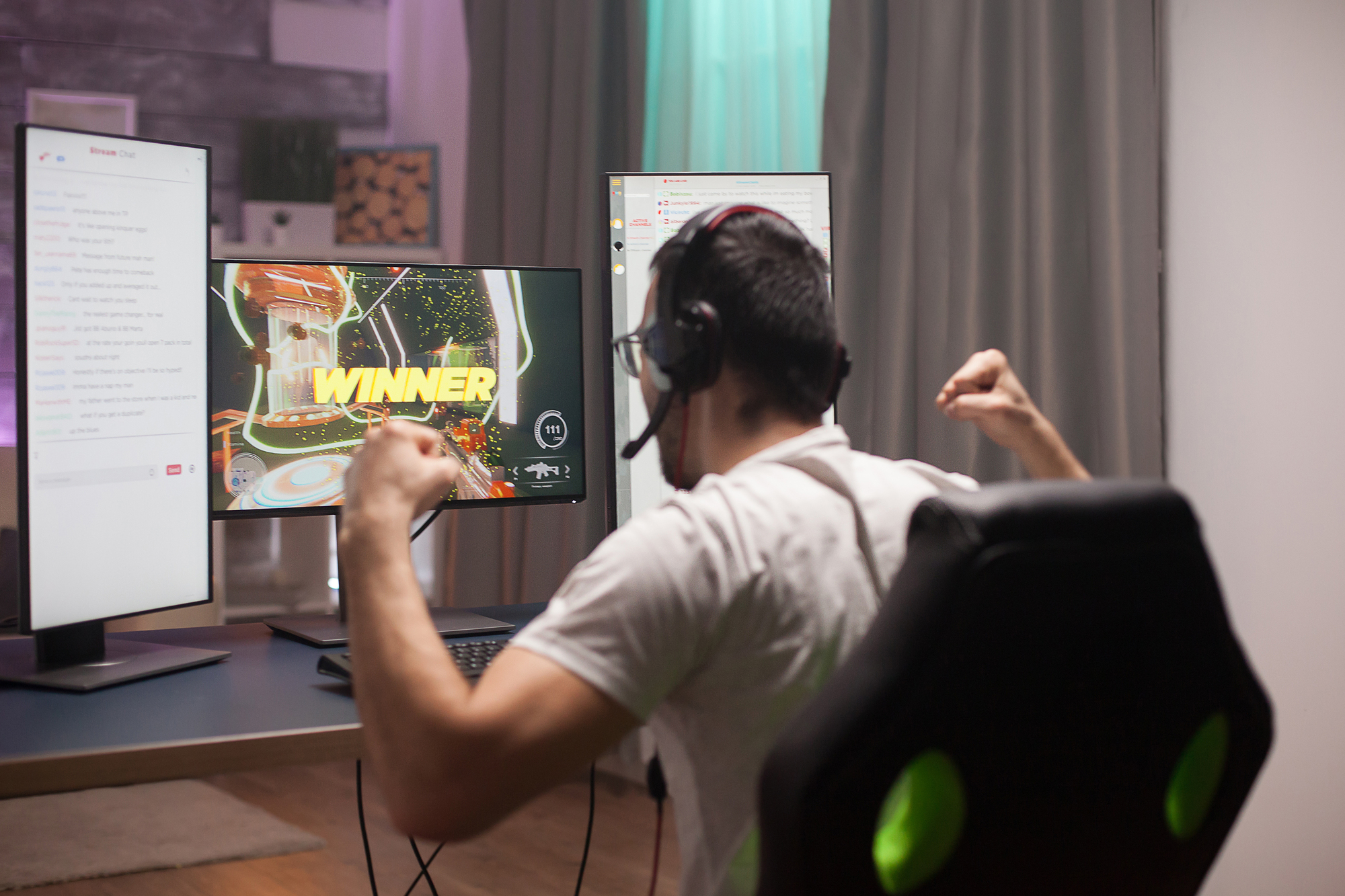Gaming has become a significant part of many children’s lives, and parents often find themselves navigating unfamiliar territory. Understanding the gaming world can help parents support their children’s interests while promoting a healthy balance. Games can offer benefits like improved problem-solving skills, enhanced social connections, and increased self-esteem when played in moderation.
Parents play a crucial role in guiding their children’s gaming habits. This involves setting appropriate time limits, choosing age-appropriate games, and encouraging other activities alongside gaming. Open communication about gaming experiences helps foster trust and understanding between parents and children.
While concerns about gaming addiction exist, it’s important to note that most children can enjoy games as part of a balanced lifestyle. By staying informed about gaming trends and platforms, parents can better relate to their children’s interests and make informed decisions about their gaming activities.
Understanding the Gaming Landscape
The gaming world encompasses diverse platforms and rating systems. Parents can benefit from learning about different gaming options and understanding content ratings to guide their children’s gaming experiences.
Exploring Different Gaming Platforms
Gaming platforms include consoles, personal computers, and mobile devices. Popular consoles like PlayStation, Xbox, and Nintendo Switch offer exclusive titles and multiplayer capabilities. PCs provide a wide range of games and the ability to modify gaming experiences. Mobile devices feature casual games and social gaming apps.
Each platform has unique features. Consoles are user-friendly and often serve as entertainment hubs. PCs offer customization options and access to indie games. Mobile devices provide convenient, on-the-go gaming experiences.
Online gaming connects players globally through multiplayer games and social features. Parents should be aware of online interactions and privacy settings on different platforms.
Deciphering Game Ratings: ESRB and PEGI
The Entertainment Software Rating Board (ESRB) and Pan European Game Information (PEGI) systems help parents make informed decisions about game content.
ESRB ratings include:
- E (Everyone)
- E10+ (Everyone 10+)
- T (Teen)
- M (Mature)
- AO (Adults Only)
PEGI uses age labels: 3, 7, 12, 16, and 18. Both systems provide content descriptors for elements like violence, language, or sexual content.
Parents should check ratings before purchasing games. These systems offer valuable information about game content and age appropriateness.
Fostering a Positive Gaming Environment
Creating a supportive and safe gaming environment helps children enjoy video games responsibly. Parents play a key role in guiding their kids’ gaming habits and online interactions.
Setting Healthy Screen Time and Digital Boundaries
Establish clear rules for gaming time. Set daily or weekly limits that balance gaming with other activities like homework, family time, and outdoor play. Use parental controls on gaming devices to enforce these limits automatically.
Create tech-free zones and times in your home, such as during meals or before bedtime. This helps prevent excessive gaming and promotes better sleep habits.
Encourage breaks during long gaming sessions. Suggest 5-10 minute breaks every hour to rest eyes, stretch, and move around.
Make gaming a family activity when possible. Play together occasionally to bond and monitor content firsthand.
Encouraging Safe Online Interactions
Teach kids about online privacy and safety. Explain the importance of not sharing personal information with strangers in games or chat rooms.
Set up privacy settings on gaming accounts. Limit who can contact your child or view their profile information.
Discuss appropriate online behavior. Emphasize treating others with respect and avoiding offensive language or bullying.
Monitor your child’s online interactions periodically. Be aware of who they’re playing with and talking to in games.
Encourage open communication about gaming experiences. Create a safe space for kids to share concerns or report inappropriate behavior they encounter online.
Benefits and Challenges of Gaming
Gaming offers cognitive and social advantages while presenting potential risks. Parents should be aware of both aspects to guide their children’s gaming experiences effectively.
Cognitive and Social Advantages
Gaming can enhance problem-solving skills and critical thinking. Many games require players to analyze situations, make quick decisions, and develop strategies. This can improve cognitive flexibility and attention to detail.
Some games foster creativity by allowing players to build virtual worlds or create characters. This imaginative play can spark innovation and artistic expression.
Multiplayer games promote teamwork and communication. Players often need to collaborate with others to achieve common goals, developing social skills and fostering friendships across geographical boundaries.
Gaming can also improve hand-eye coordination and spatial awareness. Fast-paced games require quick reflexes and precise movements, which can benefit physical coordination.
Addressing Potential Risks and Negative Effects
Excessive gaming can lead to addiction-like behaviors. Some players may prioritize games over other important activities, affecting school performance, sleep patterns, and real-world relationships.
Violent or aggressive content in some games may influence behavior, especially in younger players. Parents should monitor game content and discuss appropriate conduct with their children.
Extended gaming sessions can contribute to a sedentary lifestyle, potentially leading to health issues like obesity or poor posture. Encouraging regular breaks and physical activity is important.
Online interactions in games can expose players to cyberbullying or inappropriate content. Teaching children about online safety and monitoring their interactions can help mitigate these risks.
Support and Engagement Strategies for Parents
Effective parental support involves open communication and helping children balance gaming with other responsibilities. Parents can foster a healthy gaming environment while maintaining clear boundaries and expectations.
Navigating Family Support and Communication
Parents can start by showing interest in their child’s gaming activities. Ask questions about favorite games, characters, and strategies. This opens the door for meaningful conversations and builds trust. Set aside time to play games together, allowing parents to better understand the appeal and potential benefits.
Create a family gaming policy with input from all members. This can include agreed-upon time limits, content restrictions, and consequences for breaking rules. Regular family meetings provide opportunities to discuss and adjust these guidelines as needed.
Encourage children to share both positive and negative gaming experiences. Listen without judgment and offer support when needed. This helps kids feel comfortable discussing potential issues like online bullying or excessive play.
Balancing Gaming with Real-Life Responsibilities
Establish a daily schedule that includes time for schoolwork, chores, physical activity, and social interactions alongside gaming. Use visual aids like calendars or charts to help kids track their time and responsibilities.
Teach children to set goals and prioritize tasks. Help them break larger projects into smaller, manageable steps. This skill translates well between gaming achievements and real-life accomplishments.
Implement a “work before play” rule, where gaming time is earned after completing important tasks. This reinforces the idea that gaming is a privilege and helps children develop self-discipline.
Encourage participation in non-gaming activities that align with their interests. For example, a child who enjoys strategy games might also like chess club or debate team. This helps broaden their experiences and social circles beyond the gaming world.












